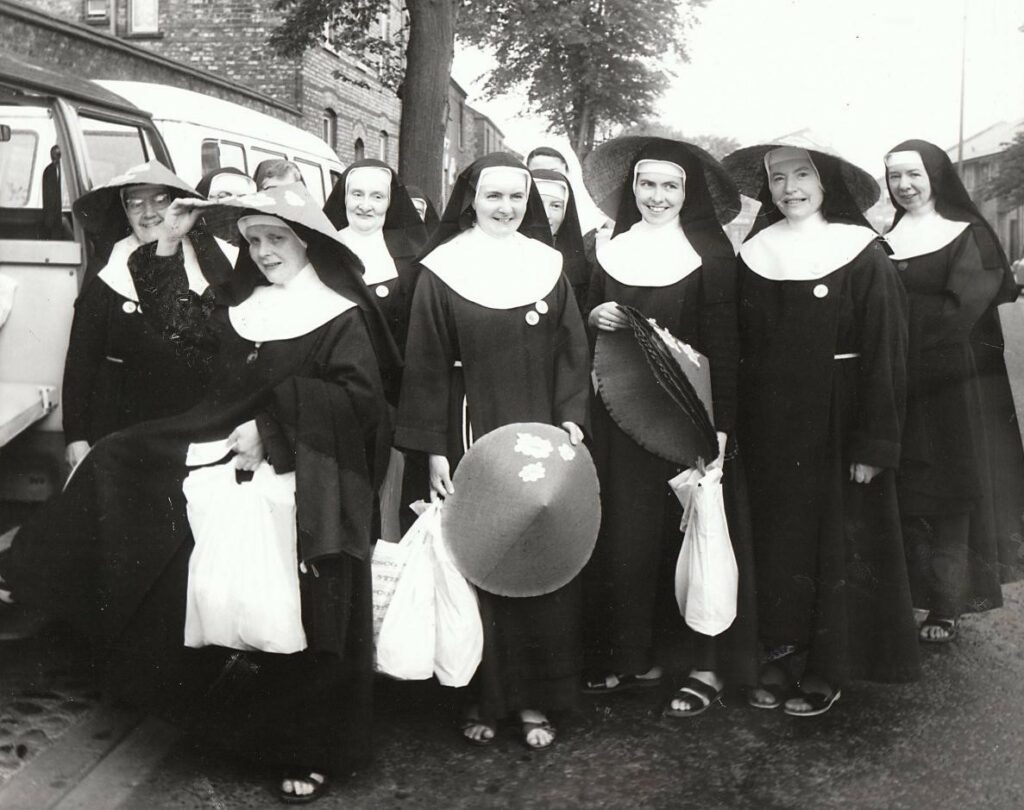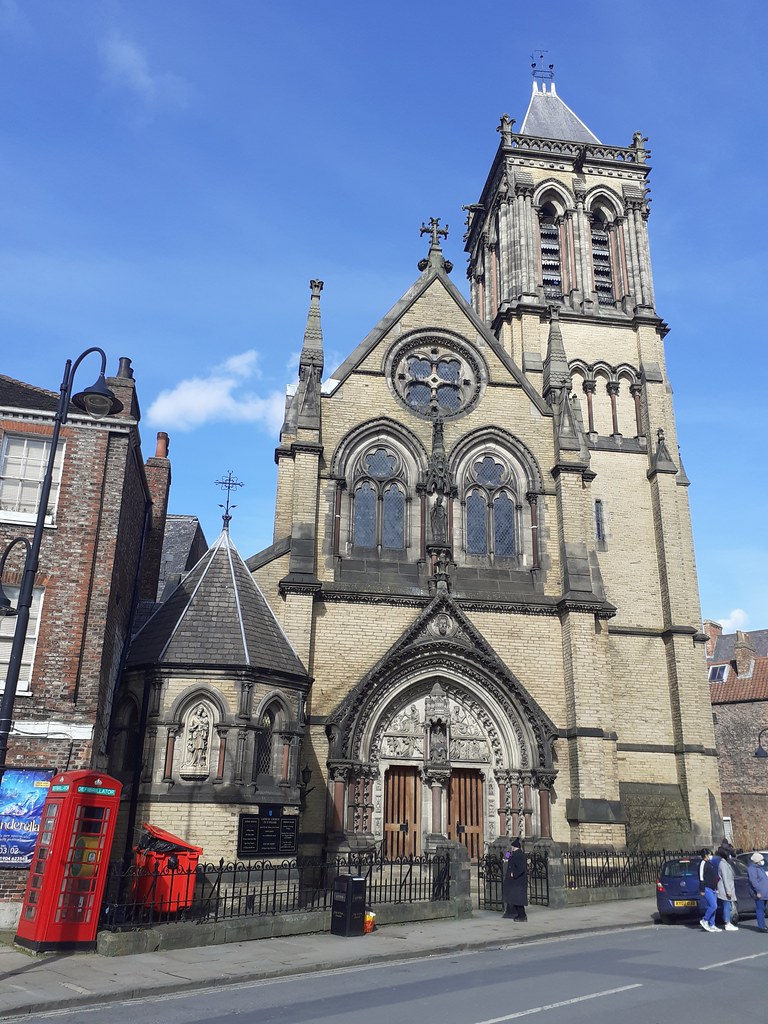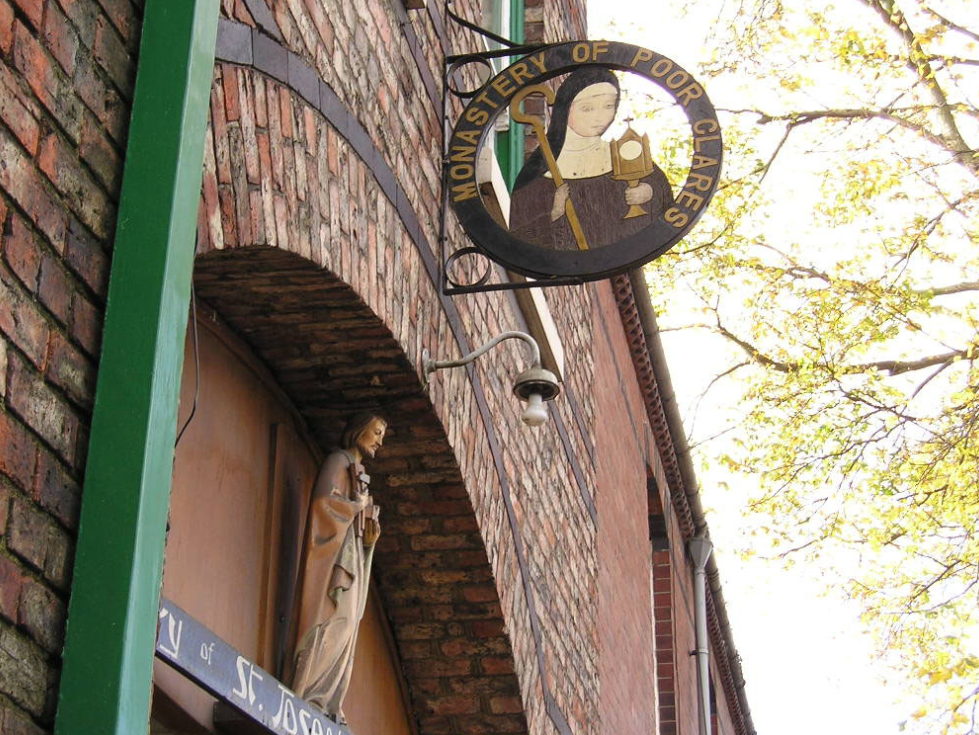Address: 65 Lawrence Street, York, YO10 3BX
Description
Golden text painted on a wooden red background reads ‘Monastery of St Joseph/Poor Clare Colettines’, showcasing a York ghost sign with a religious, rather than commercial, background.
History
St. Joseph’s Convent on Lawrence Street, York, was established by the Poor Clare Colettines – a community of Franciscan nuns founded in 1865 by a group of sisters from Bruges.
The original convent, designed by George Goldie, was constructed between 1870 and 1875, providing a home for the York community.
This facility was built to meet the needs of the Poor Clares, an order of nuns dedicated to a life of poverty and service.
However, the order’s roots stretch far back into history, tracing the journey of St. Clare (1193/4-1253), who founded the order with the guidance of St. Francis of Assisi.
The Order of St. Clare was formally established in 1216, and the rules for religious communities began to relax over time, leading to reform in the 14th century.
Colette of Corbie (1381-1447), a reformer of the Poor Clares, reinvigorated the order with a return to Franciscan ideals. She spread her influence through Europe, including Bruges, where the York community’s founders originated.

1982 – The nuns, who had taken vows of enclosure, received special permission to leave the convent to see Pope John Paul II on Knavesmire Source: York Press
St. Joseph’s Convent became a significant part of York’s religious history. At its peak, over 40 nuns lived there, dedicating themselves to a life of prayer and service.
Yet, by the start of the 21st century, with numbers declining, the nuns moved to a smaller, converted house in Askham Bryan, where they continue their work today.
The convent closed in 2013, marking the end of a 140-year presence on Lawrence Street. The building, with its five acres of land, proved too large to maintain for the smaller community.
It has since been converted into student accommodations and apartments.
Got thoughts or a story to share about this iconic sign? We’re all ears—drop your comments below and join the conversation!




